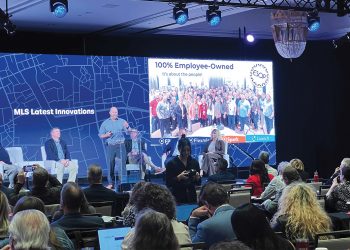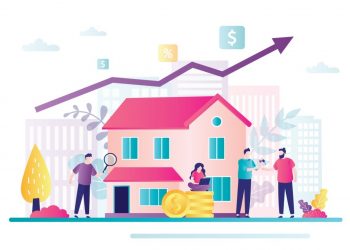Amid the flurry of activity at this year’s National Association of REALTORS® (NAR) Conference & Expo, Dr. Lawrence Yun, chief economist at NAR, and Ken Rosen, chairman of Rosen Consulting Group and UC Berkeley’s Fisher Center for Real Estate and Urban Economics, tackled the current tax reform bill for a large audience that is anticipating a major impact to the relevancy of the mortgage interest rate deduction.
As the session started, Yun reminded audience members that “we are only at our first stage and there can be various amendments.” According to Yun, the proposed tax plan will enlarge the amount of non-tax paying Americans, and will essentially eradicate the purchasing incentive for the majority of American homeowners.
Yun remarked that “simplifying the tax code and enlarging the tax rates but keeping the standard rate as it is” is the key to a successful tax overhaul plan. He added that this was his own personal opinion, and that it does not reflect the beliefs of NAR.
Rosen agreed that the proposed plan will add strain to homeownership incentives, especially in certain states.
“The biggest risk is the tax regime. It will be especially bad in high-cost states. We have to get that 3 percent growth rate the economy wants. It’s going to happen from housing. You’d think would understand that, but they don’t—and you can see it in the tax law,” Rosen said following Yun’s presentation.
Both speakers believed that changes to the tax policy can have a powerful impact on home sales and prices in the coming years. Yun commented that tax reform could solve a housing shortage situation assuming the market is normal, but emphasized the fact that “we are not in a normal situation.”
“Despite considerable demand all year, pending sales have lost a step in recent months because low supply is pushing prices higher and making home-buying less affordable in several parts of the country,” said Yun.
Yun estimated that existing-home sales will finish at around 5.47 million by end of year, reportedly the best since 2006 (6.47 million). According to NAR, this is only a small improvement (0.4 percent) from 2016 (5.45 million). Yun expects 2018 sales to expand 3.7 percent to 5.67 million, and predicted that the national median existing-home price will rise to around 5.5 percent over the next couple of years.
New single-family home sales, however, are not where they should be.
Yun’s forecasted 9.4 percent jump for single-family housing starts to 950,000 next year is still below the 50-year average (around 1.2 million). New single-family home sales are predicted to total 606,000 this year and rise to around 690,000 in 2018.
The remainder of Yun and Rosen’s presentation focused on homeownership obstacles in today’s market. According to Yun, a variety of dynamics must be considered. While the affordability index is still strong, it is slowly weakening. In addition, there is some softness in market activity right now: rising home sales are leveling off and there’s a little more breathing room; however, a recent NAR survey of home sellers found that homeowners are staying in their homes for longer—10 years instead of the previous six—which is causing housing shortages. And while mortgage rates are at historic lows, first-time homebuyers are having difficulty saving for down payments.
“The lack of inventory has pushed up home prices by 48 percent from the low point in 2011, while wage growth over the same period has been only 15 percent,” said Yun. “Despite improving confidence this year from renters that now is a good time to buy a home, the inability for them to do so is causing them to miss out on the significant wealth gains that homeowners have benefitted from through rising home values.”
Meanwhile, Rosen said that real estate agents should be pushing their clients to buy now as interest rates are at risk—Yun believes mortgage rates will gradually climb towards 4.50 percent by the end of 2018. Rosen also understands that student loans are heavily impacting buyer’s affordability, stating that “we have to come up with a way to roll student debt into a mortgage with a low interest rate.”
Rosen shared a white paper, “Rebuilding the American Dream: Strategies to Sustainably Increase Homeownership,” which identifies 25 ideas to improve homeownership rates. These include offering a down payment savings program, improving access to credit for consumers, adding shared equity products, standardizing mortgage underwriting and more.
“Ownership rates are currently below their peak across the younger age groups and in cities that have seen sharp price increases, and it’s not a good thing,” said Rosen. “A higher rate of homeownership makes sense. It is so important to the financial health of the economy. Homeownership helps households accumulate wealth over time, reduces inequality, increases investments in communities and boosts economic growth.”
For more information, please visit www.nar.realtor.
Stay tuned to RISMedia for more from this year’s REALTORS® Conference & Expo.
Liz Dominguez is RISMedia’s associate content editor. Email her your real estate news ideas at ldominguez@rismedia.com.
For the latest real estate news and trends, bookmark RISMedia.com.











